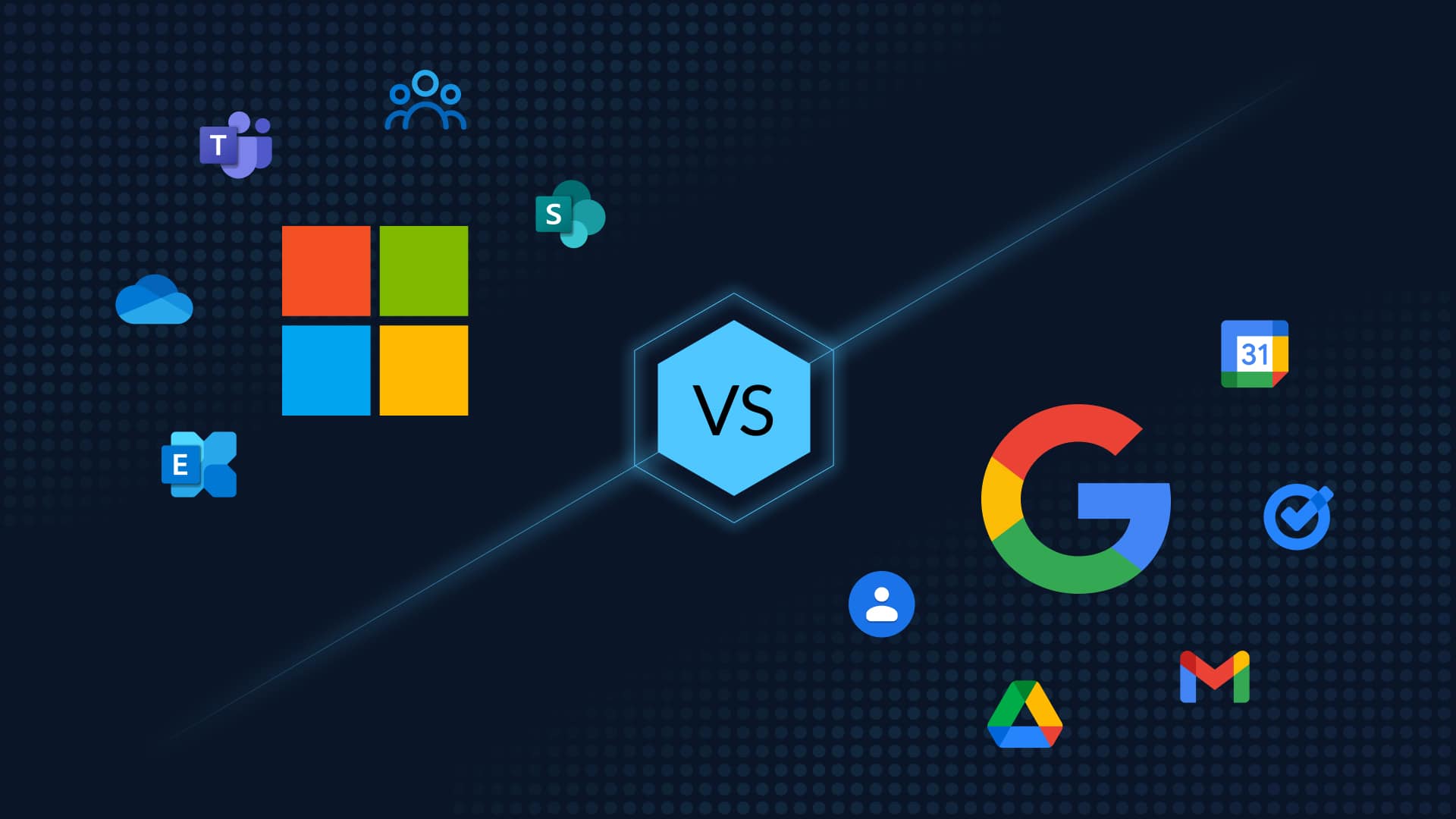Table of Contents
Updated on Jan 18th, 2021
What is Google Vault?
Google truly has an application for everything. Users subscribing to certain Google Workspace editions have access to an archival and eDiscovery tool, Google Vault. In this article, we examine what Google Vault is, its advantages, and its limitations.
Is Google Vault a Backup Solution?
Google Vault is a tool for archival and eDiscovery. It is intended to be an archive location to support eDiscovery. As an archival tool. Google Vault does an excellent job.
Google Vault allows users to retain, hold, search, and export sensitive data. All types of files can be stored within this archiving tool. Companies use Google Vault to store:
- Hangout Chats
- Recorded Google Talk Chats
- Files within Google Drive and Team Drives
- Google Group Files
Google Vault allows authorized users to search for content within a particular document. These searches scan the entire content of each document looking for relevant content. When looking for data within the corporate Google Vault, there can be limits on searches including user name, keyword, date, or organizational unit. Google allows for Boolean and wild card searches to help you find the documents needed.
An archival tool should not be confused with a backup and recovery utility. Vault is not designed as a backup solution to recover lost or corrupted Google data. This is because Google Vault does not offer easy and unlimited point-in-time recovery, a must for backup tools.
What Are the Advantages of Google Vault? How does Google Vault work?
Google Vault is designed to support a company’s archiving needs as set forth by corporate policy and legal requirements. Additionally, Google Vault supports eDiscovery for litigation purposes.
Essentially, Google Vault’s intended use is for the following purposes:
-
Audit Trail: Helpful in determining the data that users have accessed and a trail of their activities done within the Vault.
-
Legal Holds: Vault holds data for an indefinite period to meet all legal, and any other obligations.
-
Archiving Requirements: Items remain in the Vault in accordance with retention rules established by the organization’s administrators.
Emails and documents within Google Vault can be exported to users. However, the process is cumbersome and not seamless. First, the data has to be compressed as a PST or Mbox file and then extracted. After which, using a third-party tool, the data has to be uploaded to the desired location or account. Not surprising, as the actual intent of the Vault’s export capabilities is not restoring data. Instead, its purpose is to review data and for use in legal disputes or auditing matters.
Google Vault stores all Google Drive and Team Drive files. In addition to storing these files, Vault allows users to preview files created with Docs, Slides, Sheets, and Drawings. Administrators accessing the Drive Vault can also preview .docx, .pdf, and .xlsx files.
How do I Recover Data from Google Vault
Below is a detailed walkthrough of how to recover data from Google Vault.:
- Create a “matter” – think of it as a Google Vault “workspace”
- Proceed to search for the data that you wish to recover. Here are advanced search tips to query your Google Workspace data.
- Check that the retrieved data is correct by previewing it.
- Choose to save your query to be able to quickly rerun the query later.
- Finally, export your results to recover the data from Google Vault. Note that you have only 15 days after the export starts to download the export files.
What Google Vault Backup Solution Does Not Do
#1 Google Vault is NOT Backup
Google itself bills Vault as a “data retention and eDiscovery for Google Workspace”. No mention of backup or recovery.
While Google Vault is an adequate archiving system, allowing companies to retain information for legal purposes, it is not intended to be a backup solution. Files within the Vault have limited export options and with the express purpose of review by the receiving party.
Google Vault is not designed to store files that are constantly changing ( a norm with the modern workplace). In fact, according to Google’s help file on Google Vault, once enacted, a hold on files or emails can take up to three hours before it takes effect. Once held, the Vault only retains the newest version of the document, other versions do not remain in the Vault. Additionally, once the hold expires, it can take up to 15 days before the records are removed.
#2 Google Vault does NOT store all Google Workspace Data
Vault only archives Gmail, Hangouts chat, Google Talk chat, Groups, and Google Drive (including Team Drives). Google Calendar, Contacts, and Shared Drive data is not archived by Vault. Administrators can choose to turn off chat histories for their employees. However, turning off Hangout Chat records results in the data not being saved within the Vault. Additionally, users themselves can turn off Google Chat records to keep information from Vault storage. Administrators, however, cannot force users to record all Google Chats.
True backup is about saving all data including dynamically changing data. Backups should be taken regularly, at least once a day, if they are to hold accurate data.
#3 Google Vault does NOT offer point-in-time restore
A backup solution is only as good as its recovery capabilities. The restoration process should be easy, quick, and accurate.
While simple long-term retention may sound like backup, it is not. Unlike a point-in-time backup service, Google Vault does not take regular backups and hence holds outdated versions of data. Without additional copies, you have a single point of loss. Should the file within the Vault become corrupted or deleted, there is no way to retrieve the file for later use.
Exporting data from Google Vault is a complicated process that requires an administrator to complete. For example, exporting an email requires pulling the file from the Vault to a computer and then reintegrating the email into the email program using a third-party tool.
#4 Google Vault DELETES data of Inactive accounts
With Google Vault, once an employee leaves the company and the administrator deletes their account, the information saved within their Vault also is deleted. For Google, it does not matter if there is a Hold still in place, if the account is gone so is the information. Administrators must remember to first transfer important files out of the Vault before deleting accounts.
Thus, even files located within the Vault need a backup and should not be relied on to be a location for backup of active documents. Just because you have data archived in the cloud, it does not mean it is protected. Even data stored in cloud services can be damaged or lost. Archiving tools like Google Vault, while great at helping to maintain legal and regulatory obligations, cannot replace daily automated backup and point-in-time recovery.
Google Workspace Needs Backup. True Backup.
Your business-critical Google Workspace data needs protection from data loss due to malware, human error, phishing scams, ransomware, malicious intent, and sync error. SaaS data loss affects one in three companies. Which is why top analysts, regulatory laws, and SaaS solution providers themselves recommend Google backup.
CloudAlly’s Google Workspace backup includes unlimited AWS storage of all your Google data. Thus you can restore Gmail, Shared Drives (Shared Drives (formerly Team Drive), Calendars, Contacts, Tasks, and Metadata from any point-in-time or at any level of granularity. What’s more, you can save on license costs by backing up inactive account data and exporting it to your own storage. All while you’re assured of stringently secure and compliant backup of your data.







